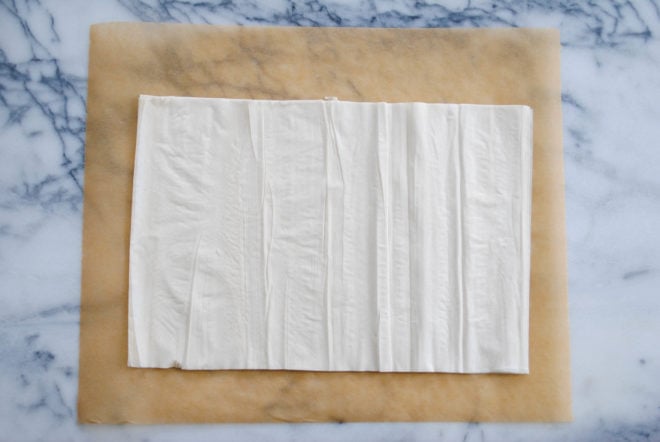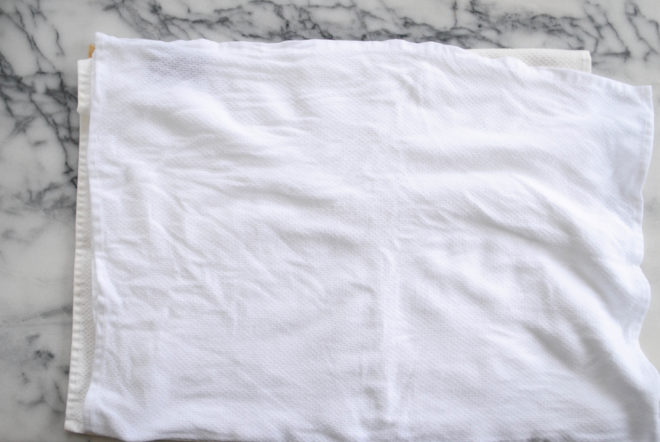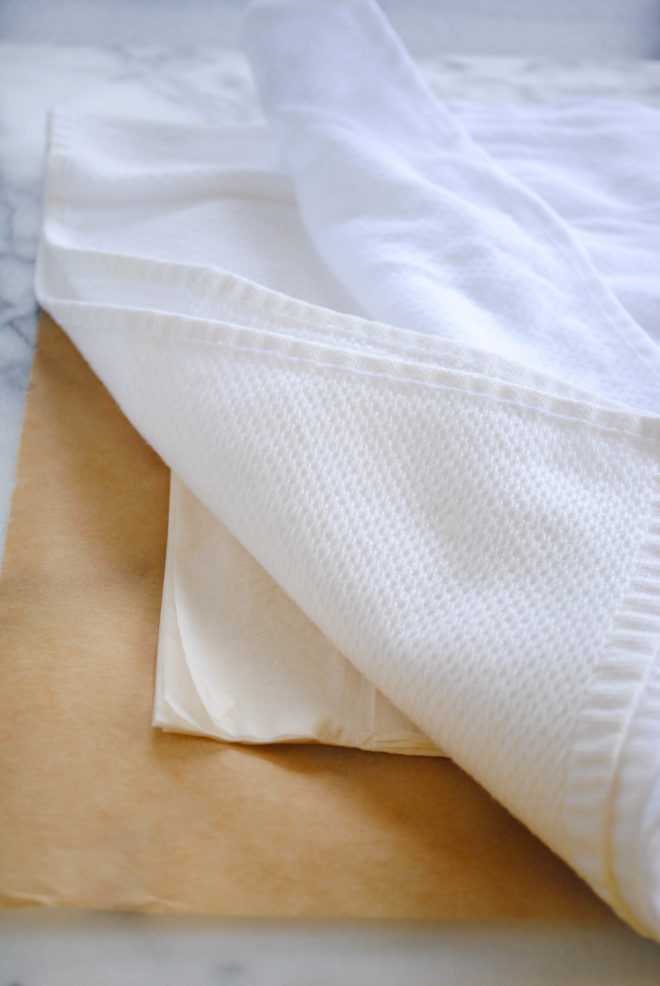Culinary School Lesson: How To Work With Phyllo Dough

In my “What I Learned in Culinary School” series, I’ll be sharing tips and tricks that I learned from two years of working with some of the country’s best chefs. This will include big things like learning to work efficiently, and small things like how to cook bacon perfectly. All of them will be applicable to your home kitchen, making you a faster, better, and more confident cook.
The first time I worked with phyllo dough, I ended up crying. Mind you, I’m not a crier. I don’t cry at weddings, sad movies or sappy commercials featuring cute animals.
But something about that phyllo dough reduced me to a blubbering mess. Perhaps it was the fact that I was trying to make baklava in my tiny kitchen on a sweltering September day (the hot oven making it even more sweltering).
Or perhaps it was simply that I really had no idea how to handle and work with the phyllo. Either way, I swore it was the last time I would ever use this ingredient (except maybe for frozen premade phyllo shells to make phyllo cup appetizers).

Then I decided to go to culinary school, and my very first class was Pastries 1. When a Certified Master Pastry Chef assigned me to make a strudel in my second week of class, I knew I had to do it, and without tears.
Luckily, the chef walked me through how to work with phyllo and not totally lose my mind.
First of all, always thaw phyllo dough in the refrigerator overnight. Do not try to thaw it at room temperature – it’ll become a sticky mess.
Save This Recipe!
Prep your mise en place (ingredients and equipment) before removing the phyllo from the fridge. If you need to cook a fruit filling, have it cooked and cooled. Melt your butter. Get your pastry brush ready.
Have your baking pan and a sharp knife next to you. Have every single thing within reach before you even think of unwrapping the phyllo. Ready to go?

Now, unwrap your phyllo and place it on a clean work surface (I like to use a piece of parchment paper). Cover it completely with a clean, dry dish towel. Cover that towel with a moist (not wet) clean kitchen towel.
As you work through your recipe, make sure you take out only the sheets you need, and then cover the remaining phyllo back up with the towels.
This setup will protect the phyllo from the dry air – the enemy of phyllo and what causes it to crack and become unmanageable.
None of this was too hard, right? After this, you’re actually all set to proceed with whatever recipe you are preparing. Phyllo dough is super versatile and can be used in a variety of sweet and savory preparations.

P.S. Now that you’re a phyllo champ, it’s time to make strudel! Do you like savory strudel? Check out this Bacon-Balsamic Strudel (good alongside a salad, or just on its own). Do you like sweet strudel? Try this Perfect Pear Strudel.


Oh my gosh, what a nightmare, Valentina! I can definitely sympathize with phyllo desserts feeling like they are comprised of TWO MILLION layers. hahaha.
Thanks Brittnei!
I see this used in lot of recipes I love or want to try! So awesome that you were able to go to culinary school to learn how to cook with this awesome dough!
Lori, my biggest “kitchen nightmare” ever was all about phyllo dough. As an intern in a restaurant, while still in culinary school, I was asked to cover for the pastry chef who was out. I had to make what felt like a 2,000,000 layer phyllo dough dessert — for a regular guest, who ordered it every time he came in. Let’s just say it came back to the kitchen. 🙁 Your post on how to work w/ it on Blue Apron is brilliant!
Yes, no tears, Nancy, no tears!
I love this series! It brings me WAY back everytime. Off to visit your link.
Aww, thanks Jane!
I just read your post, great tips, Lori! I definitely need them. I rarely work with phyllo because of how finnicky it can be. Now I can master it without tears too!